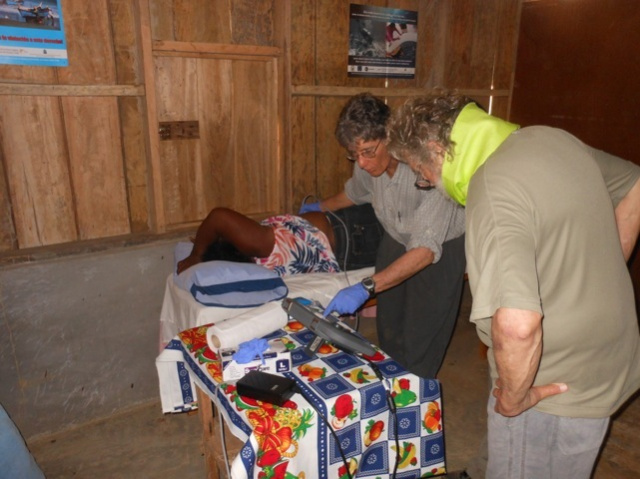

La Mosquitia has the largest wilderness area in Central America, consisting of mangrove swamps, lagoons, rivers, savannas and tropical rain forests. Manatees, tapirs and jaguars all still thrive here – they have learnt to be circumspect around man, and they may not be easy to spot. Crocodiles can be seen in the waters. Access to healthcare is made difficult due to geographic make-up of the region. There are few healthcare structures in existence, and those that do exist are often deprived of a doctor, medical equipment and pharmaceuticals. By virtue of geography and socio-economic status, the majority of the population has great difficulty in accessing current healthcare structures. In fact, for villages located along lagoon areas, the only way to arrive at the closest healthcare center is by boat along the rivers. As a result, women receive little or no prenatal services, and often give birth without knowing that they are positive for various diseases and have passed on either the disease, or its effects to their newborn child. A visit to the region is not for the faint-hearted. Access is tough (unless you fly in) and conditions are rustic at best. Now that you know a little about the location and the healthcare options, we would like to share an email from Dr. Wes Wallace, who borrowed a NanoMaxx last month to embark on a two week medical mission. Thank you Wes for sharing the following:

Our ability to serve the remote La Moskitia region of Honduras was significantly improved by the generous loan of the NanoMax. Thank you so very much. Any sort of medical imaging is simply unavailable in the region. It takes a two day journey by river and primitive road to reach even rudimentary facilities. The very portable and rugged ultrasound gave us the ability to make diagnoses that would have otherwise eluded us and helped us provide much more specific care. It helped us conserve our resources by a better understanding of who could be treated locally, and who needed evacuation.
The unit, enclosed in a waterproof case, survived miles of primitive roads in the back of a truck and days in a motorized canoe going up and down river. The extended battery life, and the ability to change out batteries made it useful where there was electricity. The patient shown being evacuated was septic with multiple deep abscesses. Other patients (a partial list) had fractures, gallstones, congestive heart failure, renal stones, complicated pregnancies and foreign bodies.
Thank you again for all the help you gave us.
Best,
Wes
Wes Wallace, MD
Associate Professor of Emergency Medicine
University of North Carolina at Chapel Hill School of Medicine
Tags




